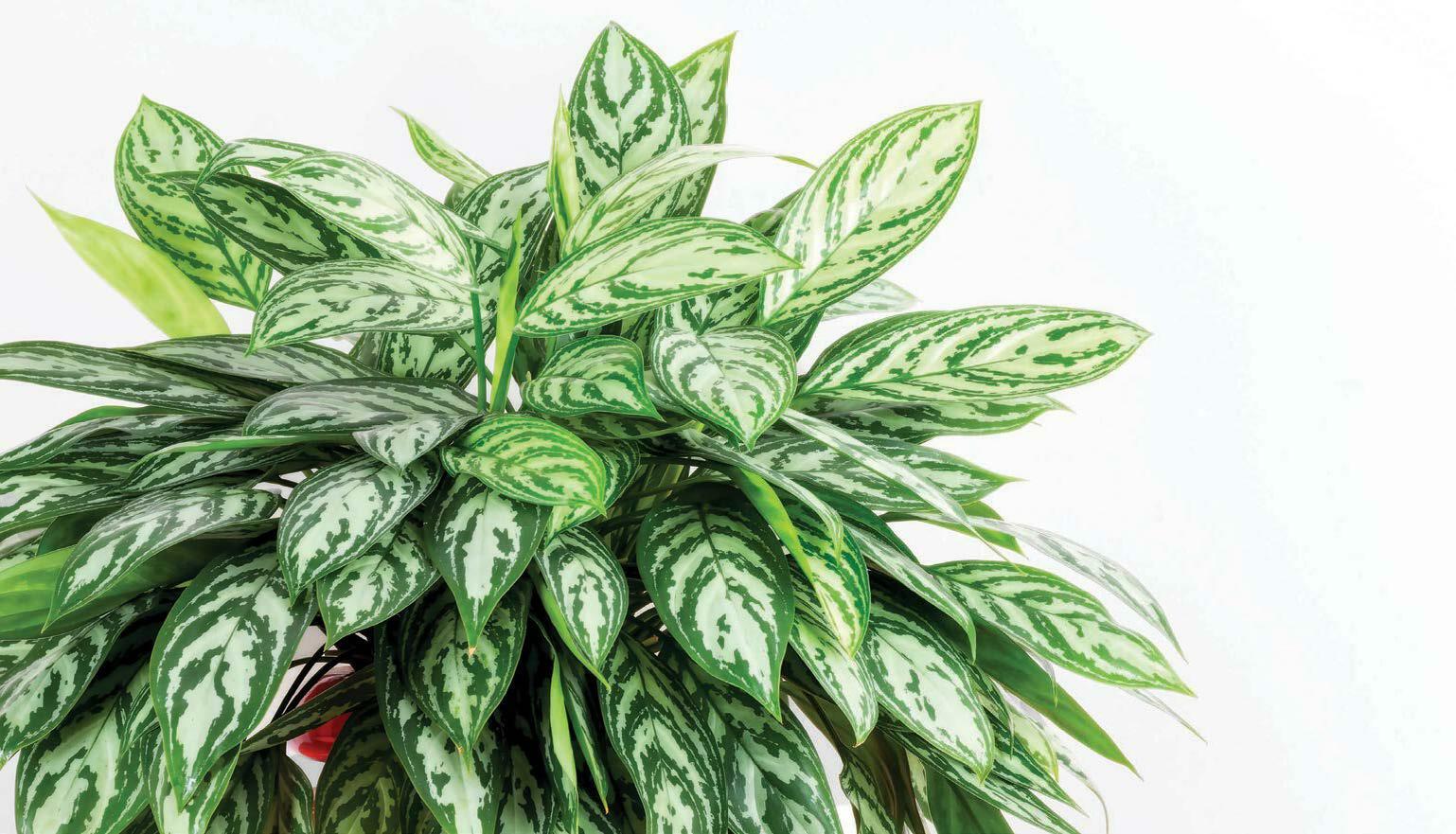GROW THIS. NOT THAT

TODAY'S HOUSEPLANT
selection is almost as impressive as the many benefits of having them in your home.
Some options are better than others, though, so consider skipping the problematic plants and growing the more prized picks instead.
▲ GROW THIS: BIRD'S NEST FERN
Bird's nest fern is more adaptable than other ferns. "Its thick fronds hold up better to dry air and missed waterings-and it has a fun architectural form," says Justin Hancock, horticulturist at Costa Farms, one of the largest horticultural growers in the world. With thick, glossy, leatherlike fronds, bird's nest fern is drought tolerant and can go one to two weeks without water. It can also put up with low light conditions, although it prefers bright, indirect lighting. This fern is a slow grower, but over time it can reach more than 2 feet across.
NOT THAT: BOSTON FERN
Boston fern is not necessarily hard to grow, but it is hard to keep in good shape. The plant is sensitive to lighting, so it's not uncommon to see some of Boston fern's fronds shrivel up and the root ball dry out if watering is forgotten. Once the spent fronds are removed, the plant's handsome shape suffers. Before you know it, you've got a sad sack plant to hide in the corner whenever company is expected.
GROW THIS: ANTHURIUM
"If you want a steady show of flowers indoors, you can't beat anthurium," Justin says.
"Newer anthurium varieties have flowers that can last a month or more in good growing conditions and appear on and off throughout the year," he says. The blooms come in a wide range of colors including red, pink, purple, white and orange.
Anthurium won't put up a fuss if you miss a watering and it grows fine in average indoor temperatures and humidity levels. It prefers medium to bright light and grows 2 to 3 feet. tall and 1 foot wide.
NOT THAT: MINIATURE ROSE
This story is from the {{IssueName}} edition of {{MagazineName}}.
Start your 7-day Magzter GOLD free trial to access thousands of curated premium stories, and 9,500+ magazines and newspapers.
Already a subscriber ? Sign In
This story is from the {{IssueName}} edition of {{MagazineName}}.
Start your 7-day Magzter GOLD free trial to access thousands of curated premium stories, and 9,500+ magazines and newspapers.
Already a subscriber? Sign In
Tracking Tiny Travelers
Small, numbered rings reveal the secrets of hummingbird migration

The Dirt on Millicompost
Learn how to use millipedes to increase soil health

THE PERFECT PAIRING
Learn the best ways to use an abundance of blooms to attract more birds and beautify your feeder space

ULTIMATE GUIDE TO Hummingbirds
Enjoy the whirr of tiny wings when you create a space that these majestic fliers want to return to again and again

Ask the Experts
The pros share their knowledge and answer reader questions

DOING IMPORTANT WORK
Readers share photos and show appreciation for tiny pollinator powerhouses that play a huge role in supporting biodiversity and keeping ecosystems healthy

Nutrient Knowledge
Get the scoop on how fertilizers boost your soil

Pollinator Magnet
Create a hummingbird hot spot with this interesting flower

The Hotter, the Better
Try these heat-tolerant picks that hummingbirds love

Going the Distance
The tiny rufous hummingbird has a tendency to travel far and wide
